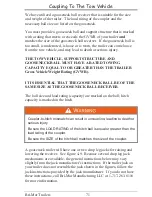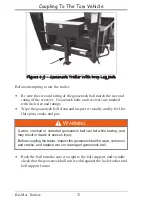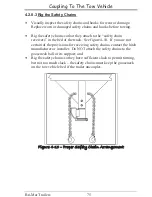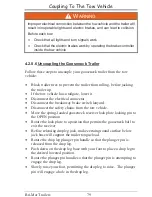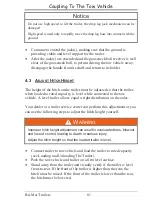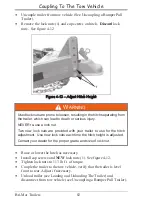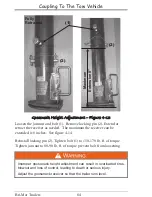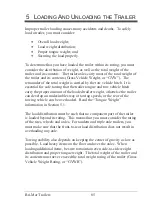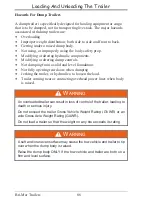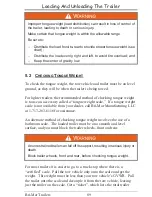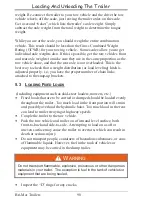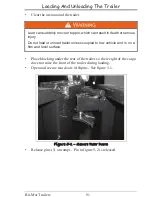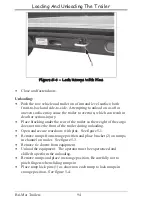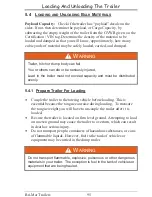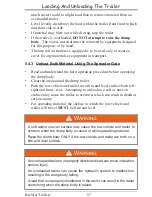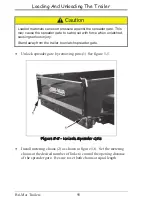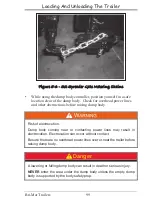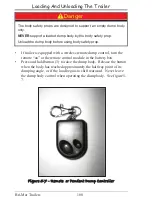
Bri-Mar
85
5 L
OADING
A
ND
U
NLOADING THE
T
RAILER
Improper trailer loading causes many accidents and deaths. To safely
load a trailer, you must consider:
•
Overall load weight;
•
Load weight distribution;
•
Proper tongue weight; and
•
Securing the load properly.
To determine that you have loaded the trailer within its rating, you must
consider the
distribution
of weight, as well as the total weight of the
trailer and its contents. The trailer axles carry most of the total weight of
the trailer and its contents (Gross Vehicle Weight, or “GVW”). The
remainder of the total weight is carried by the tow vehicle hitch. It is
essential for safe towing that the trailer tongue and tow vehicle hitch
carry the proper amount of the loaded trailer weight, otherwise the trailer
can develop an undesirable sway at towing speeds, or the rear of the
towing vehicle can be overloaded. Read the “Tongue Weight”
information in Section 5.1.
The load distribution must be such that no component part of the trailer
is loaded beyond its rating. This means that you must consider the rating
of the tires, wheels and axles. For tandem and triple axle trailers, you
must make sure that the front-to-rear load distribution does not result in
overloading any axle.
Towing stability also depends on keeping the center of gravity as low as
possible. Load heavy items on the floor and over the axles. When
loading additional items, be sure to maintain even side-to-side weight
distribution and proper tongue weight. The total weight of the trailer and
its contents must never exceed the total weight rating of the trailer (Gross
Vehicle Weight Rating, or “GVWR”).
Trailers
Summary of Contents for DT508LP
Page 144: ...Electrical Drawings Bri Mar 138 Trailers...
Page 145: ...Bri Mar 139 9 ELECTRICAL DRAWINGS Trailers...
Page 146: ...Bri Mar 140 Trailers...

